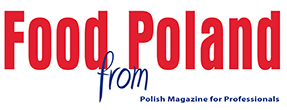I will begin from the benefit of focus: we know what to focus on, our portfolio is not overly dispersed. There are many companies on the market that own several hundred or even several thousand SKUs, which generates the problem of how to sell them. This is not our concern. Another benefit is the fact that the market on which we operate is niche. Both halva and sesame snaps are small categories in relation to the entire confectionery market. Yet at the same time, they are products with a lower penetration scale than mass products, so they will not be available in every store. This penetration poses a kind of a challenge to consumers who have a problem with availability while trying to buy something during impulse shopping. However, I can see more positive aspects of our business. The Americans say, “get big, get niche, or get out,” and this is true. Being a medium-sized company often means being a mediocre company. However, being a relatively small player, but one focused on development, is quite satisfactory.
Your business largely relies on exports. One could conclude that this channel is more important to you…
Indeed, exports are very important to us, constituting the bulk of the company’s turnover. The thing is that we have gained undisputed success in several export directions, including North America. We also often manage to sell halva to the “lion’s cave”, e.g. Greece, a country famous for this traditional delicacy. Nevertheless, it turns out that our halva is highly desirable there, even if in small amounts. We also care about our domestic market. We are selling more and more products in Poland. Both in the halva and sesame snaps category, we have achieved significant success. We have increased our sales over the last two years, and our portfolio includes interesting new products that have gained appreciation. Our plans include the development of our offer. We hope it will satisfy the consumers.
Do you think that the increase of availability and shares on the Polish market can be credited to new products?
New products are unquestionably a vital part of our business, yet the basis is obviously comprised by products which have been present in our offer for many years. Our company was established in 1945 and it has been producing both halva and sesame snaps ever since, with several other confectionery products along the way. We have immense traditions, excellent technology, committed employees and, most importantly, everyone feels connected with this tradition which is the foundation of our operations. We have a history we are proud of, we make our halva manually – this gives us the taste advantage. Halva enthusiasts know what this is about. Our halva is characterized by long fibres, which means high quality. However, I invite everybody to consume this product, because if you find a good halva, which our product unquestionably is, you will keep going back to it.
Why is your halva so popular on the Greek market? Is it about the product, or rather about the partner relations?
I think both of these are important, the relations and the products alike. In countries perceived as halva kingdoms, which are mainly located in the Middle East, whenever someone tastes our product, we start negotiating the production of halva for their market. The world has gone a long way forward in the area of mechanization. The process of packaging should be automated, since it is highly time-consuming, yet if halva production is overly mechanized, the product will lose the properties it used to have several decades ago, it will become sesame powder. So we have the benefit of our quality, or the traditional way of production.
What trends are currently prevailing on the confectionery market, especially in the halva category? Have the existing trends intensified during the pandemic, or maybe completely new ones have come into being?
Some trends had been visible before, and the pandemic has emphasized and strengthened them. The first one is the clean label trend and search for healthier products. Many consumers pay attention to product composition. For instance, looking at our sesame snaps, you can see they only have a couple of ingredients. Our products are almost natural, even though they are obviously processed in order to obtain the desired product consistency – sesame grains have to be roasted and enriched with components ensuring the crispiness and shape of a sesame snap. Consumers wish to feel safe, they want to control what they eat and to be sure the food will have no adverse effect on their health.
The pandemic has also had some effect on the category of snacks that recorded drops at the height of the lockdown. Home office and remote education made the consumers reach for such products definitely less often. The lifestyle changed to “slow”, and people started preparing more meals at home. Consumption styles have changed, which has unquestionably affected our category as well. A very positive aspect of our product is that they are indeed natural, healthy, yet sweet at the same time. With the combination of these three characteristics, if the market penetration was higher, sales would surely grow even more.
How have your products found themselves in a trend of increased home cooking? How has this situation translated to sales?
There were highs and lows, depending on the market and the period. We recorded no violent perturbations but rather a stable growth. Apart from consumption trends, one should also pay attention to the behaviour of the economy and the way people prepare for a so-called crisis or period of uncertainty. We also face disrupted supply chains, so the pandemic has affected the availability of certain products, sometimes very essential ones. Currently, shelves can be empty before Christmas again due to supply delays.
Sesame is a peculiar raw material that needs to be imported. It is not only the pandemic but, among other things, the climate changes that affect the supply chain. Have you experienced any problems in this area?
The climate changes are an obvious thing, but their effect on the availability of products has been negligible so far. Under the pandemic, however, we have been facing a transport situation characterized by container logistics perturbations. Freight costs have increased many times and the same product can cost much more today. This is not just due to an increase in the price of the raw materials but of its transport as well. The profits of container freight companies have grown fourfold. This is a challenge, not just for us, since every company faces the increase of expenses, especially if the product has to be transported in a container across several continents.
Would you name the growth of logistic expenses as the greatest challenge?
This is a major challenge but not the only one. Our crucial markets are America and the Middle East, where we have to send our product by containers, and high expenses are accompanied by uncertainty of delivery times. As recently as 2 years ago, the time of delivery to Middle Eastern ports was approx. 6 weeks; today, it is a minimum of 9 weeks, with 10 or 11 weeks to Canada or the USA, and we cannot know for sure if this time will become even longer. Currently, 800,000 people in Poland are quarantined, which means that human resources are limited at many workplaces. The costs of production are on the rise in virtually every industry – packaging and raw materials are getting more expensive. Sometimes it can be explained by the previous year’s supply and demand imbalance, caused by lockdowns and renewed market recoveries. Now is an excellent opportunity to increase everything, which must also translate into shelf prices.
You have mentioned a momentary market standstill and subsequent recovery. Is it worse now?
Currently, the problem inolves disrupted supply chains. Even if there is demand now, a factory with no appropriate components for production cannot supply the products. This is compounded by the price-related uncertainty. We have several long-term contracts now, but many of them have been changed to so-called prices of the day, which may change dynamically. There are plenty of examples, not just on the food market but also, for instance, in the automotive sector where shortage of one chip is enough to extend the time of waiting for a car to one year. This does cause perturbations.
Can any plans be made in the face of uncertainty? Has Unitop got any plans for the future?
We operate under conditions of uncertainty, yet we have to make some assumptions. A situation of lack of containers and uncertainty whether the products would be delivered in time and at a standard price will ultimately pass. Therefore, we have to prepare for such a time, so we develop in spite of all perturbations. My colleagues or competitors surely act similarly, making assumptions that are sometimes changed on the go. We have to be highly vigilant and keep our eyes wide open.
So the only certain thing is uncertainty…
Exactly. This is surely the case now. On the FMCG market, an uneventful day has always been a lost day.
What now? New markets? New products?
We have our specific markets and products that we develop. We also speak of automation that we will successfully implement, in spite of all the delays in part deliveries, because this is the future. There is a shortage of manpower currently, we face vacancies or high staff turnover at many positions. And we have to address it appropriately.
Thank you for the interview.












